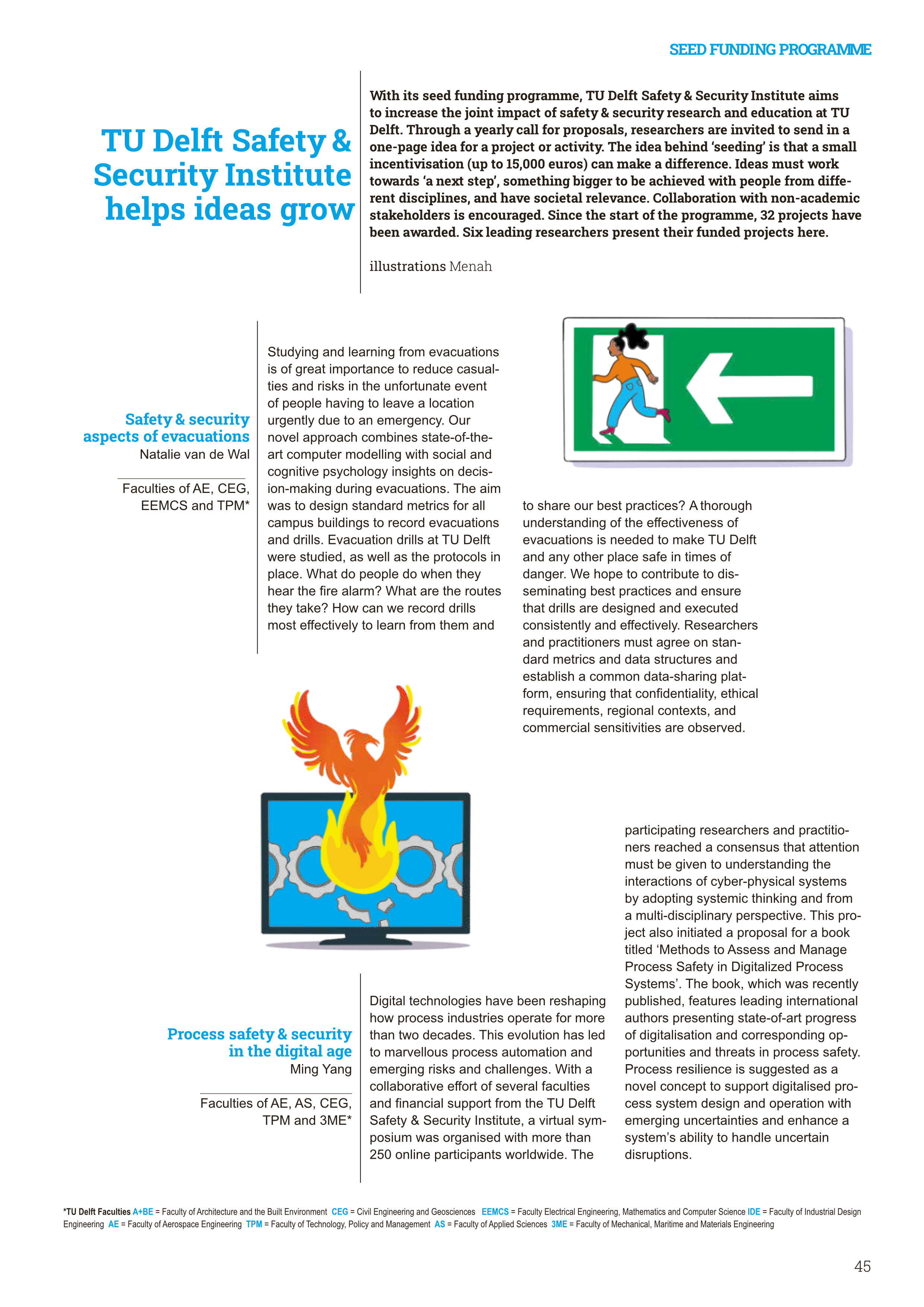Delft Safety & Security Institute Helps Ideas Grow
With its seed funding programme, TU Delft Safety & Security Institute aims to increase the joint impact of safety & security research and education at TU Delft. Through a yearly call for proposals, researchers are invited to send in a one-page idea for a project or activity. The idea behind ‘seeding’ is that a small incentivisation (up to 15,000 euros) can make a difference. Ideas must work towards ‘a next step’, something bigger to be achieved with people from different disciplines, and have societal relevance. Collaboration with non-academic stakeholders is encouraged. Since the start of the programme, 32 projects have been awarded. Six leading researchers present their funded projects here.
illustrations Menah
Studying and learning from evacuations is of great importance to reduce casualties and risks in the unfortunate event of people having to leave a location urgently due to an emergency. Our novel approach combines state-of-theart computer modelling with social and cognitive psychology insights on decision-making during evacuations. The aim was to design standard metrics for all campus buildings to record evacuations and drills. Evacuation drills at TU Delft were studied, as well as the protocols in place. What do people do when they hear the fire alarm? What are the routes they take? How can we record drills most effectively to learn from them and to share our best practices? A thorough understanding of the effectiveness of evacuations is needed to make TU Delft and any other place safe in times of danger. We hope to contribute to disseminating best practices and ensure that drills are designed and executed consistently and effectively. Researchers and practitioners must agree on standard metrics and data structures and establish a common data-sharing platform, ensuring that confidentiality, ethical requirements, regional contexts, and commercial sensitivities are observed.

Safety & security aspects of evacuations
Natalie van de Wal
Faculties of AE, CEG, EEMCS and TPM*
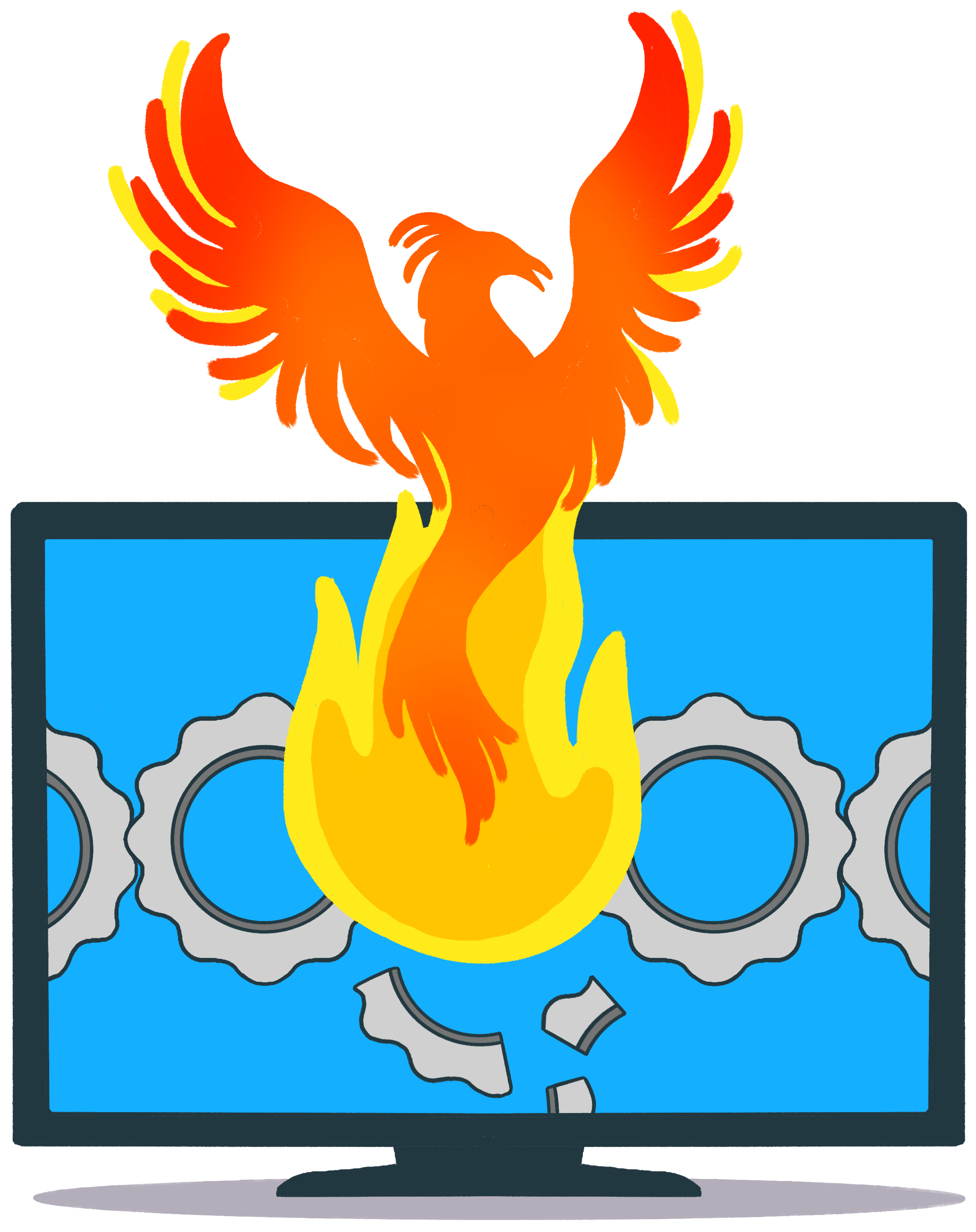
Process safety & security in the digital age
Ming Yang
Faculties of AE, AS, CEG, TPM and 3ME*
Digital technologies have been reshaping how process industries operate for more than two decades. This evolution has led to marvellous process automation and emerging risks and challenges. With a collaborative effort of several faculties and financial support from the TU Delft Safety & Security Institute, a virtual symposium was organised with more than 250 online participants worldwide. The participating researchers and practitioners reached a consensus that attention must be given to understanding the interactions of cyber-physical systems by adopting systemic thinking and from a multi-disciplinary perspective. This project also initiated a proposal for a book titled ‘Methods to Assess and Manage Process Safety in Digitalized Process Systems’. The book, which was recently published, features leading international authors presenting state-of-art progress of digitalisation and corresponding opportunities and threats in process safety. Process resilience is suggested as a novel concept to support digitalised process system design and operation with emerging uncertainties and enhance a system’s ability to handle uncertain disruptions.
The fast-growing use of the Internet of Things (IoT) poses increasing and often unknown risks for the safety & security of digital infrastructures. We worked on building a living lab to jointly investigate IoT safety & security, especially the hardware-software vulnerabilities of IoT. With the seed funding of TU Delft Safety & Security Institute, we built a research consortium funded by the EU through the H2020 SPATIAL project, aiming to build the pathway toward a trustworthy European cybersecurity sector. TU Delft is in a leading position for safeguarding safe and secure innovation in these new IoT and Edge computing technologies.
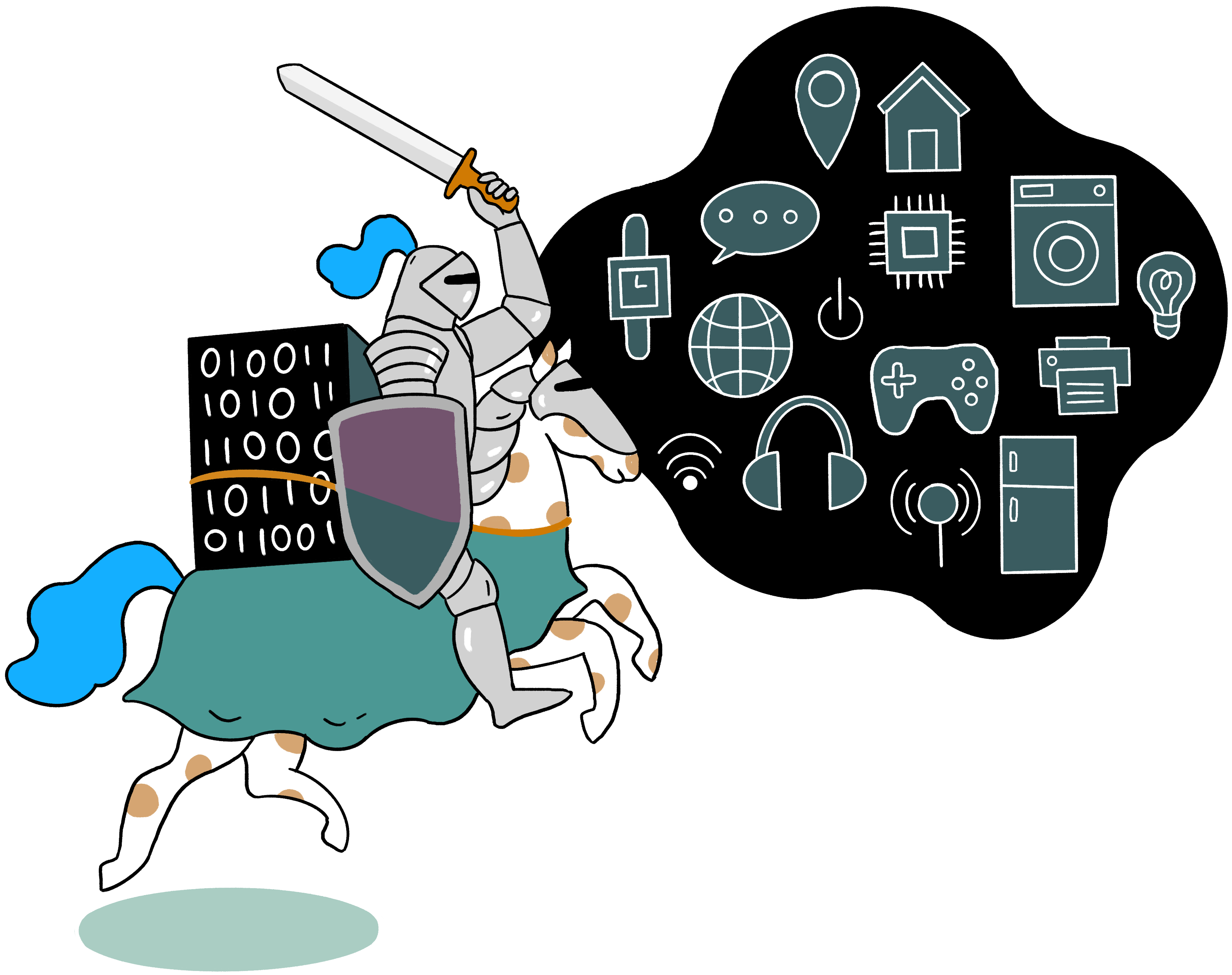
Safe & secure innovation for future digital infrastructures
Aaron Ding
Faculties of AE, EEMCS and TPM*
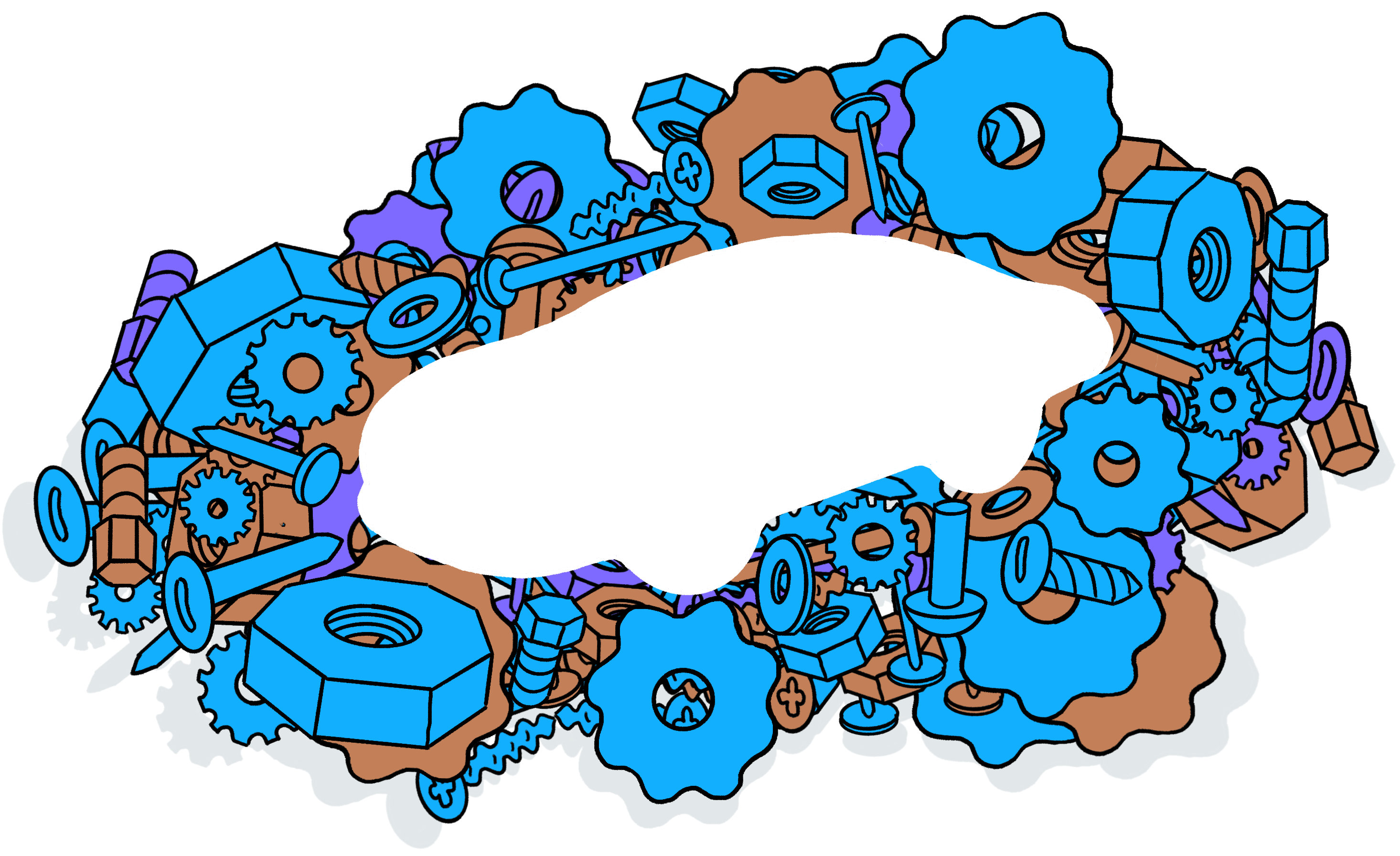
Overengineering and safety: like oil and water?
Oscar Oviedo-Trespalacios
Faculties of IDE and TPM*
Overengineering involves elaborately designing a product or problem-solving solution, even when a simpler and equally efficient alternative exists. We assert that overengineering also introduces safety risks. For instance, consider the case of a U.S. doctor who tragically perished in a post-crash fire because he couldn’t exit the vehicle; Tesla’s retractable door handles lack a manual opening option during malfunctions. The door handle issues persisted, with drivers struggling to enter their vehicles during winter due to icy blockages. Consequently, the practice of using "sticks on door handles" to remedy this problem gained popularity, unfortunately also increasing the carbon footprint. Despite the perception that engineering these handles was misguided, proponents argue that such inaccessible handles heighten security against external threats. This example accentuates the importance of considering overengineering and highlights the significance of integrating safety-related values comprehensively. We generate novel insights through case studies and workshops and inform research and innovation communities. By assembling experts, we envisage cultivating a deeper comprehension of the intricate interplay between overengineering, safety, and security. This endeavour, in turn, will bolster the campaign for advocating more conscientious engineering practices.
Safety is a top priority for the aviation industry. Predictive maintenance is a novel approach to maintenance, deeply rooted in the techniques from Prognostics and Health Management (PHM). This approach aims to predict the state of an engineering system ahead of time. This can be a game changer in the prevention of aviation accidents, but also the enhancement of comfort and sustainability. For example, an aircraft’s poorly maintained air conditioning system may not critically comprise safety, but it will surely negatively influence the comfort of passengers. Poorly maintained equipment, such as the aircraft engine or the landing gear, can also lead to sustainability issues and more pollution and waste (e.g. fuel). To give another example, unmanned aerial vehicles can pose a serious safety risk when their battery state is not managed correctly. A sudden battery discharge can lead to a safety collision or a mission abortion. Prediction with PHM can play a significant role here. It helps to reduce waste and safety risks. We organised a series of seminars with top speakers in the field. The results are threefold: enhancing education and awareness, knowledge development, and establishing a strong network that connects research with industry, with partners such as KLM and Netherlands Aerospace Centre (NLR)
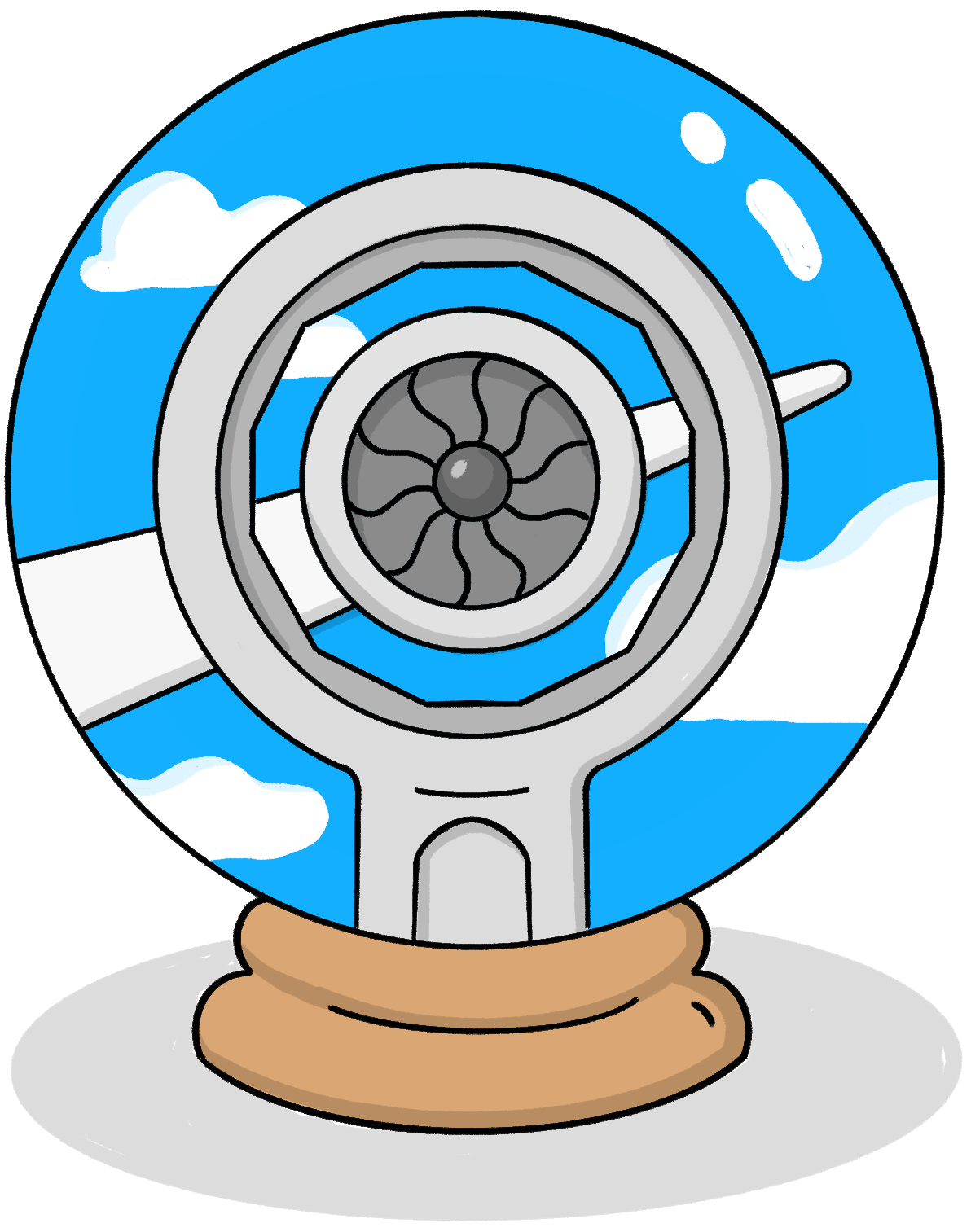
Predictive maintenance as a game changer
Marcia Baptista
Faculties of A+BE, AE, CEG, TPM*

Connecting climate, economy, and water models
Jazmin Zatarain Salazar
Faculties of EEMCS and TPM*
Climate policy and negotiations are being informed by global integrated assessment models (IAMs) that link economic and climate processes into a single framework. These models, however, fail to capture the distribution of risks at regional scales and rely on rough aggregations of the total cost of climate change. To this effect, we have developed methods that allow us to understand the benefits and risks at a regional scale for different mitigation trajectories. Further, we have developed and improved existing test cases, with a particular emphasis on West and Sub-Saharan Africa. These cases now serve as templates for modelling other systems. Our team has studied climate scenarios and adaptation policies to assess droughts and floods. Our open-source models enable us to explore scenarios and policies in water systems, and this was achieved by integrating programming support for code optimisation and fast, high-performance computing. Decision support is enhanced by innovative visualisation techniques. As a result, we have identified robust and stable policies that can withstand climate extremes. We believe these tools can provide essential guidance to develop socially acceptable policies for food security, energy needs, environmental considerations, and security of supply. This is especially important in large transboundary water systems prone to geopolitical tensions.
*TU Delft Faculties A+BE = Faculty of Architecture and the Built Environment CEG = Civil Engineering and Geosciences EEMCS = Faculty Electrical Engineering, Mathematics and Computer Science IDE = Faculty of Industrial Design Engineering AE = Faculty of Aerospace Engineering TPM = Faculty of Technology, Policy and Management AS = Faculty of Applied Sciences 3ME = Faculty of Mechanical, Maritime and Materials Engineering

